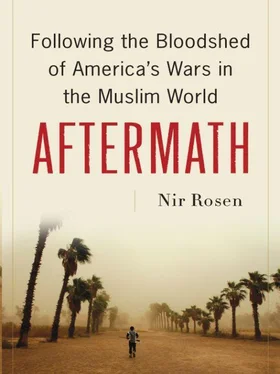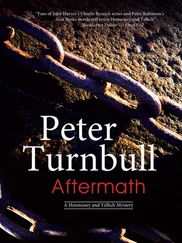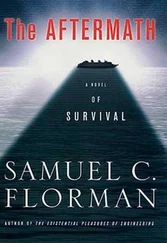Sheikh Safaa’s death squad was well armed, with grenades, grenade launchers, and Kalashnikovs. The soldiers of the group were selected by the sheikh for their physical strength or martial prowess. The group was supplied with many vehicles by supporters in Shaab. Having Mahdi Army friends in the Vehicle Registration Department made it easy for the group to replace their license plates. Their assassination campaign led to a massive clearance of Sunnis from Shaab, part of a deliberate strategy to cleanse the area of Mahdi Army enemies following two years of clashes with Salafis.
Sheikh Safaa had final approval of all targets, who would then be tracked for a couple of days before their murder. When his men conducted operations and raids, they usually wore either all black or military uniforms. Sometimes they coordinated their operations with the Iraqi army. The group typically raided a target’s house at night, dragging him from bed, taking him to the mosque for interrogation, executing him, and then dumping the body on the outskirts of Sadr City in a place locally known as Al Sadda (The Dam), where there was a sand berm. Before these Shiite revenge attacks, radical Salafis had imposed their rule on much of Shaab, even killing barbers to prevent local citizens from having their beards shaved. In January 2006, one Mahdi Army soldier said, “We cleaned our city from all Wahhabis,” adding, “now we can live peacefully in Shaab.”
At around the same time, Muqtada’s spokesman in Kadhimiya, Hazim al-Araji, condemned “terrorists” (his euphemism for Sunnis), but he also asserted that the American occupiers were allied with these “terrorists” against Shiites.
BRUTAL AS THE American occupation was, it was also incompetent. The Americans never controlled much in Iraq. They could destroy, but they had trouble building. They allowed militias to take over Iraq and allowed the police, who should have been protecting civilians from the predations of militias, to become involved in the conflict as one of the main sectarian militias. And they either ignored it for the sake of expediency, as they did when they dealt with warlords in post-Taliban Afghanistan, or they were simply unaware. But there were exceptions, intelligent and sensitive officers who sensed what was happening and could see the sectarian catastrophe that the American invasion had unleashed.
Phil Carter’s experience as a captain in the U.S. Army is a disturbing example of what was happening across Iraq. Carter served in Baquba, in the Diyala province, northeast of Baghdad, between October 2005 and September 2006. As part of a team training and supervising the Iraqi police, he saw firsthand the results of that initial failure to build a professional culture within the Interior Ministry, which had become rife with cronyism and Shiite chauvinism. Thanks in part to the Sunni boycott of the elections, Shiites were overrepresented in Diyala, and the Supreme Council was very powerful. Carter’s team advised Diyala’s chief of police, Maj. Gen. Ghassan Adnan al-Bawi, who was an official with the Supreme Council’s Badr militia, and they operated closely with the governor, who was also a Badr official.
“Al-Bawi was running Badr death-squad ops, even targeting other Shiites they had political beefs with,” Carter told me. “Badr death squads were doing targeted killings in houses and businesses. Good Shiite officers were sidelined. If they tried to take an initiative they would get fired or moved or, on a couple of occasions, killed.” The chief of the major crimes unit, Colonel Ali, was nicknamed “Cable Ali” by the Americans. “He was running a torture chamber. We found them, and we pushed to get him charged by the Ministry of Interior, and he was eventually arrested. But he was sprung by the police chief. We had gotten him fired a couple of times, but he was always reinstated. The rumor was that he was a CIA guy and a CIA source on intelligence.” When Carter first arrived, his predecessors told him that they had made a bargain with their colleagues from Diyala: “‘They’re thugs, but they’re our thugs. They keep order, just don’t ask questions.’ These guys were running their own little organized crime entity, selling fuel on the black market,” Carter observed. “There was graft of police funds, extortion. Sectarianism showed in who they picked for leaders and what neighborhoods they would neglect.” Even when they had evidence of misconduct, Carter and his men often felt powerless. “Iraqi detainees were tortured by Iraqi officers with power drills,” Carter said. They had cigarette burns and bruises on their backs. Every indicator was that they were picked up on a sweep and had done nothing wrong, just been at the wrong place at the wrong time, and were Sunni. Carter wanted to make an example of one Iraqi army officer, but the Military Transition Team [MTT, pronounced “mitt”] with him was obstructive. They thought he was effective.
In November 2005, Carter’s team got 200 reports of police abuse from families visiting detained relatives. Carter took the complaints to Bawi, the police chief. He said he would launch an investigation, promising to look into people who were obviously innocent. But what about guilty people? Carter retorted. They got what they deserved. Bawi said. He cited Guantánamo and Abu Ghraib: “‘I only do what you do. You don’t understand, Captain Carter. You just got here.’”
Between January and March 2006, just as IED attacks and ambushes were increasing in the wake of the Samarra bombings, the U.S. battalion in charge of Baquba decided to close the base in Baquba and move it to Camp Warhorse, on the edge of the city. “It was the height of strategic folly,” Carter complained. “At the moment things are getting worse, we pull back.”
This pattern was repeated throughout Iraq as the Americans ceded territory to militias and the civil war intensified. Americans realized too late that their presence was provoking hostility, and removed their soldiers from the streets. But by then the occupation was second to the civil war.
ON FEBRUARY 22, 2006, the Shiite Askari Shrine in Samarra was blown up. In the days that followed, more than 1,300 bodies were found in Baghdad, most of them Sunni. Once these figures were revealed, the Interior Ministry—whose forces were probably responsible for a large number of the killings—asked the Shiite-controlled Ministry of Health to cover them up. Shiites took over dozens of Sunni mosques and renamed them after the Samarra shrine. Shiite militias targeted the Abu Hanifa Mosque in Adhamiya with numerous mortars. Muqtada was said to have announced that “we have the legitimate cover to kill al-Nawasib,” a pejorative term for Sunnis.
Sunni-controlled television stations in Iraq—such as Baghdad TV, controlled by the Iraqi Islamic Party—showed only Sunni victims of the retaliatory attacks. Shiite stations such as Al Furat and Al Iraqiya focused on the damaged shrine and Shiite victims. Al Furat was even more aggressive, encouraging Shiites to “stand up for their rights.”
Following the attack Sunni militias faced the increased wrath of the Mahdi Army. Throughout Iraq Mahdi Army cadres flooded the streets, marching and chanting in unison. Sunni militias understand that the only militia in Iraq capable of defeating the Supreme Council’s Badr was the Mahdi Army, which is why they initially courted Muqtada and his men, who opposed Iranian intervention. This is also why Sunni militias hoped to establish a united front with the Mahdi Army against the Americans.
Two days after the Samarra attack, Sheikh Yasser, a young Shiite sheikh in the Shuhada Al Taf Mosque, was passing by the Sunni Al Sajjad Mosque in the Maalif neighborhood. His car was stopped and searched by armed guards working for the mosque. The sheikh later informed the Mahdi Army, who controlled a mosque elsewhere in the neighborhood. Mahdi Army soldiers surrounded the Sajjad Mosque and searched it for explosives. Sunnis informed the media, and local stations claimed that the Mahdi Army had taken over the mosque. On the following Friday Sunnis asked for U.S. Army protection against possible Mahdi Army attacks during their Friday prayers. The Sajjad Mosque belonged to the extremist Ansar Sunnah group: it had celebrated two funerals for Iraqi Palestinian suicide bombers who were killed in late 2004 during operations against coalition forces, and it occasionally celebrated the graduation of children who memorized the Koran in ceremonies named after Al Qaeda videos such as Winds of Victory .
Читать дальше











